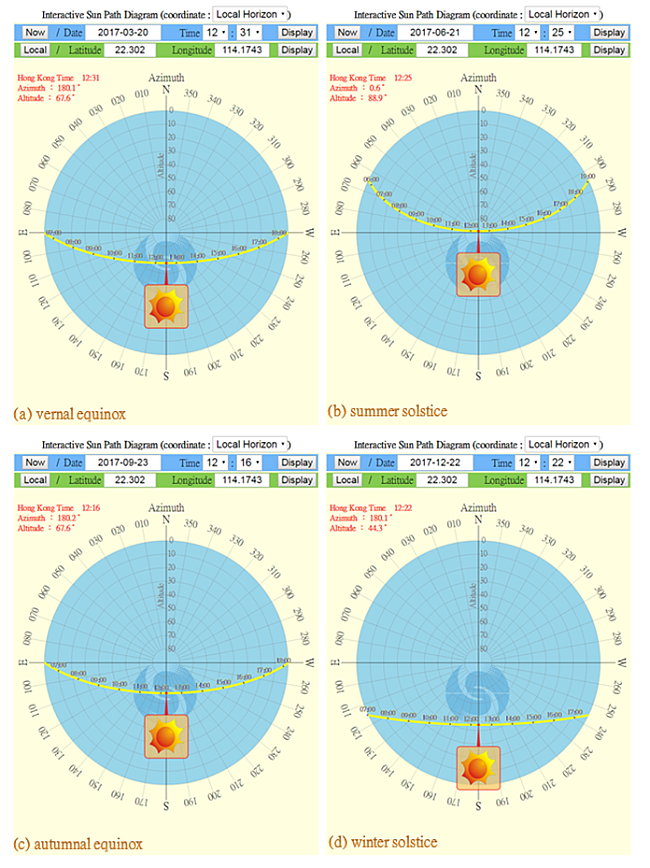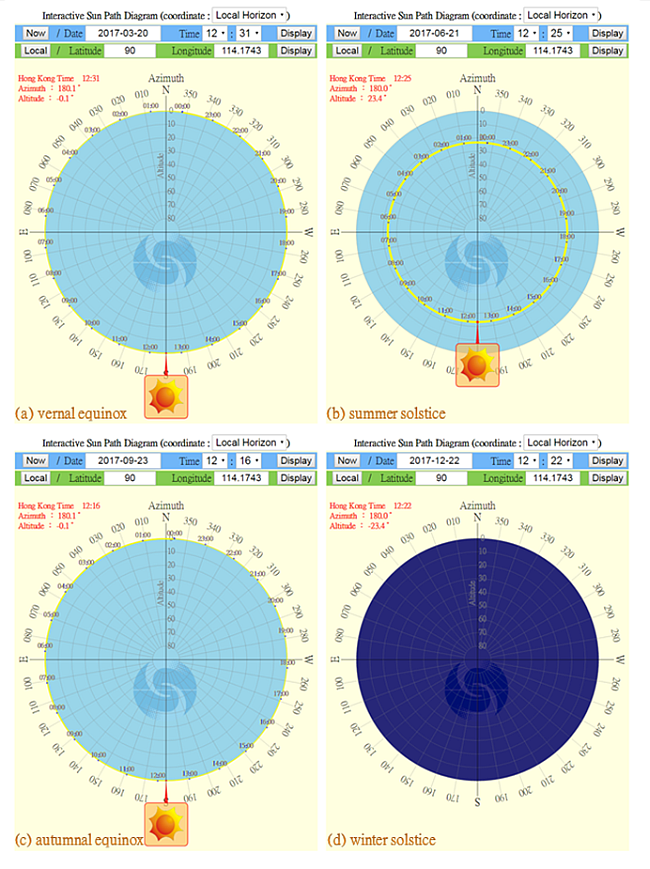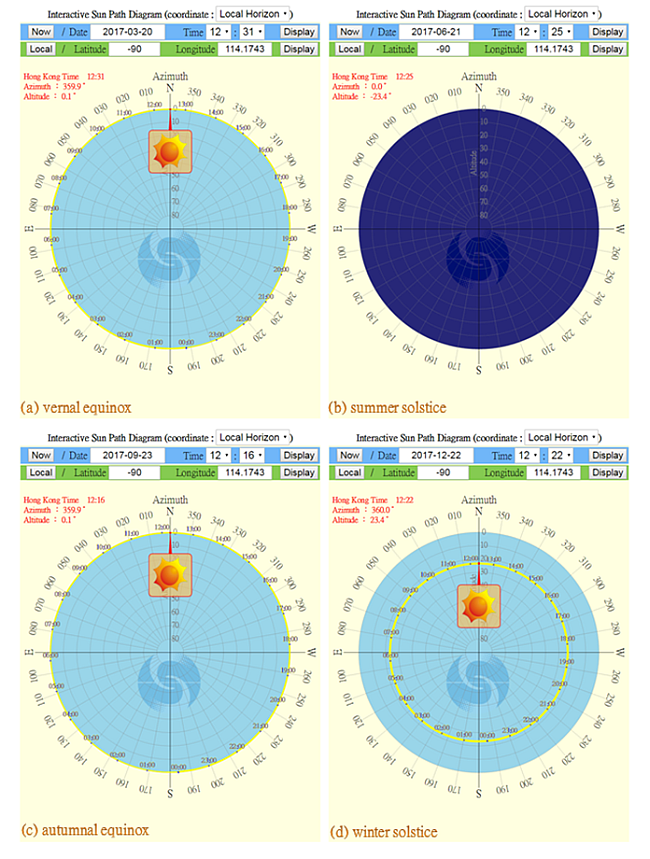A Day That Lasts One Year
A Day That Lasts One Year
MOK Hing-yim, HUI Tai-wai, CHENG Chung-choi and WONG Wai-kwong
April 2017
"Working from dawn to dusk, and resting at night" is a daily routine for most people. But to follow such a pattern for people living in a place with a day-night cycle lasting a year long may be quite challenging!
Using the Hong Kong Observatory online "Interactive Sun Path Diagram"(1), the position and path of the Sun at any location can be readily obtained with input of specified date, time, latitude and longitude. With reference to the Chinese 24 Solar Terms(2), Figures 1(a) to 1(d) show respectively the curved sun paths at Vernal Equinox, Summer Solstice (Northern Solstice), Autumnal Equinox and Winter Solstice (Southern Solstice) as observed in Hong Kong. The sun path is longest with the greatest curvature at Summer Solstice, and hence the longest day; and it is shortest and least curved at Winter Solstice, and hence the shortest day.
Due to the Earth's axial tilt of 23.44o, the Sun at the north pole (90oN) starts to orbit around the horizon at Vernal Equinox (Figure 2(a)). As the season marches, the Sun keeps orbiting around while its elevation (altitude) gradually increases up to a maximum of 23.44o at Summer Solstice (Figure 2(b)). After Summer Solstice, the orbiting Sun begins to descend and reaches the horizon at Autumnal Equinox (Figure 2(c)). The 6-month period from Vernal Equinox to Autumnal Equinox with the Sun moving around above the horizon is the so-called "polar day". This is followed by the "polar night" when the Sun stays below the horizon for six months until the next Vernal Equinox (Figure 2(d)).
At the south pole (90oS), the pattern is exactly the opposite with the "polar day" lasting from Autumnal Equinox to Vernal Equinox and the "polar night" for the rest of the year (Figures 3(a) to 3(d)).
To most people, day and night together make one "day". However, for people living at the poles, the day-night cycle is completed through six consecutive months of daylight and six consecutive months of darkness, which makes the passing of a day quite literally a year long!

Figure 1 Sun paths of (a) Vernal Equinox, (b) Summer Solstice,(c) Autumnal Equinox and (d) Winter Solstice over Hong Kong

Figure 2 Sun paths of (a) Vernal Equinox, (b) Summer Solstice,(c) Autumnal Equinox and (d) Winter Solstice at the North Pole

Figure 3 Sun paths of (a) Vernal Equinox, (b) Summer Solstice,(c) Autumnal Equinox and (d) Winter Solstice at the South Pole
Notes:
(1) Interactive Sun Path Diagram
- https://www.hko.gov.hk/en/gts/astronomy/SunPathDay3_ue.htm
(2) Date and Time of the 24 Solar Terms
- https://www.hko.gov.hk/en/gts/astronomy/Solar_Term.htm
(1) Interactive Sun Path Diagram
- https://www.hko.gov.hk/en/gts/astronomy/SunPathDay3_ue.htm
(2) Date and Time of the 24 Solar Terms
- https://www.hko.gov.hk/en/gts/astronomy/Solar_Term.htm